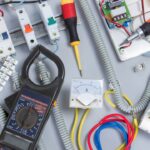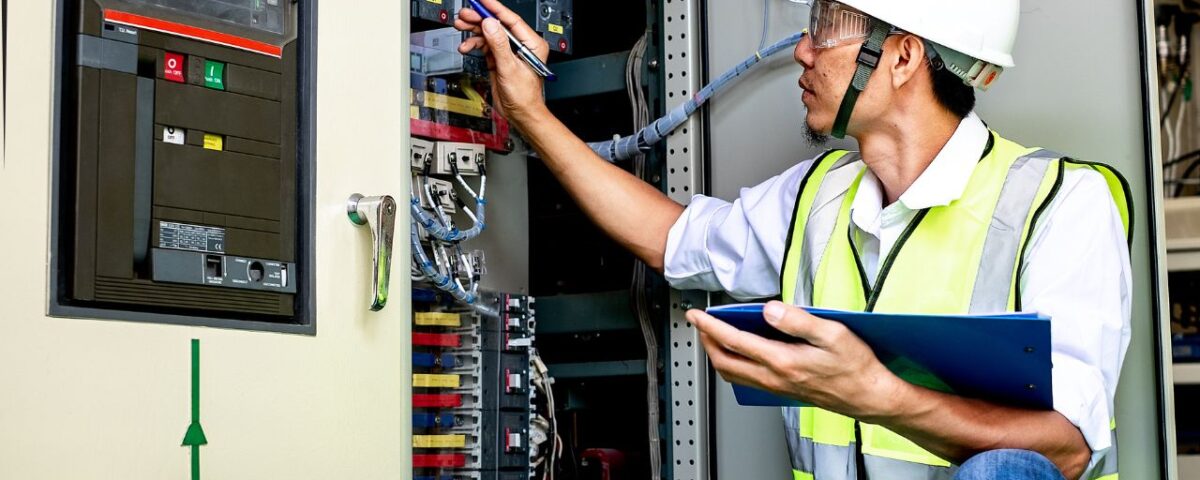
Business Tips for a Newly Established HVAC Business in Sydney
March 11, 2025
5 Advanced Electrical Safety Devices for the Modern Home
April 7, 2025Electrical safety is a crucial concern for homeowners and businesses alike. Faulty wiring, outdated electrical systems, and improper usage of electrical appliances can lead to serious hazards, including fires and electrocution. Understanding the warning signs of potential electrical hazards can help prevent accidents before they occur. Nexa Electrical, a trusted name in the electrical industry, emphasizes the importance of recognizing and addressing electrical issues promptly. In this article, we will discuss key signs of potential electrical hazards and effective measures to prevent short circuits.
Common Signs of Electrical Hazards
1. Flickering or Dimming Lights
Flickering or dimming lights are often a sign of underlying electrical issues. While occasional flickering due to power fluctuations may not be concerning, persistent flickering indicates potential wiring problems. Overloaded circuits or loose connections can cause lights to dim unexpectedly. If you notice frequent flickering, it’s advisable to consult an expert like Tyson Orth to inspect your electrical system.
2. Frequent Circuit Breaker Trips
Circuit breakers are designed to protect your electrical system from overloads. However, if a breaker trips frequently, it may indicate a more serious issue, such as a short circuit, ground fault, or an overloaded circuit. A continuously tripping breaker should never be ignored, as it can be a sign of deteriorating wiring or faulty appliances.
3. Burning Smell or Scorch Marks
A burning smell, especially near electrical outlets or switches, is a red flag for potential fire hazards. Scorch marks or discoloration on outlets may suggest overheating or loose connections. If you detect a burning odor, turn off the power supply to that area and contact a licensed electrician immediately.
4. Warm or Sparking Outlets
Electrical outlets should never feel warm to the touch. If they do, it could mean excessive electrical resistance, which may lead to overheating and potential fires. Additionally, if you notice sparks when plugging or unplugging devices, it may indicate a short circuit or a faulty outlet. Tyson Orth recommends replacing damaged outlets and ensuring proper grounding to minimize risks.
5. Buzzing or Crackling Sounds
Electrical systems should operate silently. If you hear buzzing or crackling sounds from your outlets, switches, or electrical panels, it could indicate loose wiring or arcing faults. These issues can lead to electrical fires if not addressed promptly.
6. Rodent Damage to Wiring
Rodents can chew through electrical wiring, causing insulation damage and exposing live wires. Exposed wires increase the risk of short circuits and electrical fires. If you suspect rodent activity in your home, inspect wiring for signs of gnawing and take preventive measures to keep pests away.
How to Prevent Short Circuits
1. Regular Electrical Inspections
Routine electrical inspections are essential for maintaining a safe home or workplace. Hiring a professional from Nexa Electrical ensures that your system is up to code and free from potential hazards. Inspections can help identify worn-out wiring, outdated fuse boxes, and overloaded circuits before they lead to serious problems.
2. Avoid Overloading Circuits
Plugging multiple high-wattage appliances into a single outlet can overload the circuit and increase the risk of short circuits. To prevent this, distribute electrical loads evenly and use power strips with built-in surge protectors. Be mindful of the maximum capacity of each circuit.
3. Replace Outdated or Damaged Wiring
Old or damaged wiring is one of the leading causes of electrical hazards. If your home or building has outdated aluminum wiring or frayed cables, it’s crucial to replace them with modern, high-quality wiring. Tyson Orth advises upgrading old electrical systems to prevent potential dangers.
4. Install Ground Fault Circuit Interrupters (GFCIs)
GFCIs are designed to shut off power when an electrical fault occurs, reducing the risk of electric shock and short circuits. Installing GFCI outlets in moisture-prone areas such as bathrooms, kitchens, and outdoor spaces can enhance safety.
5. Use Proper Extension Cords
Extension cords are a temporary solution and should not be relied upon for permanent electrical connections. Using damaged or low-quality extension cords can lead to overheating and short circuits. Always use cords rated for the specific load they will carry and avoid running them under carpets or furniture.
6. Keep Electrical Panels Accessible
In case of an emergency, it’s essential to have quick access to your electrical panel. Avoid blocking breaker boxes with furniture or storage items. Labeling circuits properly can also help in quickly identifying and addressing electrical issues.
7. Educate Household Members and Employees
Educating your family members or employees about electrical safety can prevent accidents. Encourage them to report any unusual electrical behavior, such as sparks, shocks, or flickering lights. Awareness and prompt action can go a long way in ensuring safety.
Electrical hazards can pose serious risks if left unchecked. By recognizing warning signs and implementing preventive measures, you can reduce the likelihood of short circuits and other electrical problems. Nexa Electrical stresses the importance of routine maintenance and professional inspections to keep your electrical system safe. If you experience any of the warning signs mentioned above, don’t hesitate to seek assistance from a qualified expert like Tyson Orth. Prioritizing electrical safety today can prevent costly repairs and potential disasters in the future.

